Hello, fellow spiritual seekers! I’m thrilled to share this in-depth exploration of the sacred path with you. As we delve into ancient wisdom and spiritual practices from various cultures and traditions, we’ll uncover the keys to living a more mindful, connected, and spiritually enriched life. And the best part? The journey begins right here, coming tomorrow.
Our world is a treasure trove of spiritual wisdom, passed down through generations and preserved within sacred texts, oral traditions, and time-honored rituals. These practices can offer us guidance, inspiration, and the tools to navigate life’s challenges. By learning from the ancient wisdom of our ancestors, we can find our own unique sacred path and deepen our spiritual connection.
In this blog post, I’ll take you on a global journey to explore spiritual practices and insights from various cultures and traditions. From the mystical teachings of the Kabbalah and the profound wisdom of the Vedas to the contemplative practices of Zen Buddhism and the indigenous spirituality of Native American tribes, we’ll examine a diverse range of ancient wisdom to enrich your spiritual life.
Throughout this journey, I’ll provide practical advice and resources to help you incorporate these practices into your daily life. Whether you’re a seasoned spiritual practitioner or just beginning your journey, there’s something for everyone to learn and discover.
Ancient Egyptian Spirituality.

Delving into the Mysteries of the Egyptian Pantheon and Uncovering the Hidden Wisdom of the Ancient Egyptians.
Ancient Egypt has long been a source of fascination for historians, archaeologists, and spiritual seekers alike. The ancient Egyptians were deeply spiritual people who believed in the interconnectedness of the universe and the importance of living in harmony with natural forces. At the core of their spiritual beliefs was the Egyptian pantheon, a complex system of gods and goddesses representing different aspects of life and the natural world.
The Egyptian pantheon included gods and goddesses such as Ra, the sun god; Isis, the goddess of motherhood and magic; Osiris, the god of the afterlife; and Anubis, the god of embalming and the dead. Each deity had its own unique qualities, and the Egyptians sought their guidance and protection in various aspects of life. By exploring the stories and symbolism of these gods and goddesses, we can uncover valuable insights into the ancient Egyptian worldview and gain a deeper understanding of their spiritual wisdom.
One of the most fascinating aspects of ancient Egyptian spirituality is the concept of Ma’at, the goddess of truth, justice, and cosmic balance. Ma’at played a crucial role in maintaining order in the universe and ensuring the smooth functioning of society. The ancient Egyptians believed that living in accordance with Ma’at’s principles was essential to achieving spiritual harmony and securing a favorable afterlife.
To live in harmony with Ma’at, the ancient Egyptians practiced various rituals and ceremonies, such as daily offerings to the gods, elaborate funerary rites, and the construction of temples and monuments to honor the deities. They also developed a sophisticated system of magical practices, known as heka, which involved the use of spells, charms, and amulets to invoke the protection and favor of the gods.
One way to connect with the wisdom of ancient Egyptian spirituality is through the study of hieroglyphs, the sacred writing system used to record their religious texts and inscriptions. By learning to decipher hieroglyphs, we can gain access to the ancient Egyptians’ spiritual teachings and insights, preserved for thousands of years on temple walls, papyrus scrolls, and other artifacts.
Another avenue for exploration is the study of ancient Egyptian mythology and cosmology. The Egyptian creation myth, for example, tells the story of how the universe was created from the primordial waters of Nun, with the emergence of the god Atum, who created the first divine couple, Shu and Tefnut. This myth provides insights into the Egyptians’ understanding of the interconnectedness of all things and the cyclical nature of life and death.
To incorporate the wisdom of ancient Egyptian spirituality into your own life, consider adopting some of their practices, such as setting up an altar with representations of your favorite Egyptian deities, using Egyptian symbols like the Eye of Horus or the Ankh as amulets, or meditating on the principles of Ma’at to cultivate balance and harmony in your daily life.
By exploring the ancient wisdom and spiritual practices of the Egyptian culture, we can draw inspiration from their understanding of the universe, the importance of living in harmony with natural forces, and the interconnectedness of all things. Through this journey, we can deepen our spiritual connection and walk our own sacred path with the guidance of the ancient Egyptians’ timeless wisdom.

The Vedas and Hindu Spirituality

Exploring the Rich Spiritual Heritage of India and Learning about the Profound Teachings of the Vedas
India’s spiritual heritage is vast and diverse, rooted in millennia of accumulated wisdom and knowledge. At the heart of Hindu spirituality lie the Vedas, a collection of ancient sacred texts that form the foundation of Hindu beliefs, rituals, and philosophy. Composed in Sanskrit, the Vedas are considered to be among the oldest sacred texts in the world, dating back to around 1500-1200 BCE.
The Vedas consist of four main collections:
Rigveda, Yajurveda, Samaveda, and Atharvaveda. Each Veda contains hymns, prayers, and rituals, as well as philosophical insights and guidance for living a spiritually fulfilling life. The Vedas cover a wide range of topics, from the nature of the universe and the gods to the proper conduct of daily life and the path to spiritual liberation.
One of the central tenets of Hindu spirituality is the concept of dharma, which refers to the moral and ethical principles that guide an individual’s actions and decisions. The Vedas teach that by following one’s dharma, a person can attain spiritual growth, inner peace, and ultimately, liberation from the cycle of birth and death known as samsara.
Another key aspect of Hindu spirituality is the belief in the Trimurti, a divine trinity consisting of Brahma (the creator), Vishnu (the preserver), and Shiva (the destroyer). Each member of the Trimurti plays a specific role in maintaining the balance and harmony of the universe, and they are often associated with various aspects of life, such as creation, preservation, and transformation.
Hindu spirituality also embraces a rich tradition of meditation, yoga, and other contemplative practices designed to help individuals connect with their inner selves and the divine. These practices serve as valuable tools for personal transformation, self-discovery, and spiritual growth.
To incorporate the wisdom of the Vedas and Hindu spirituality into your own life, consider the following:
Study the Vedas:
Delve into the sacred texts to gain a deeper understanding of Hindu beliefs, rituals, and philosophy. You can find English translations of the Vedas online or in bookstores specializing in spiritual literature.
Practice meditation and yoga:
Engage in daily meditation and yoga practices to cultivate mindfulness, inner peace, and a deeper connection with the divine. Many resources are available online to help you learn and practice these ancient techniques.
Explore the concept of dharma:
Reflect on your own unique purpose and path in life, and seek to align your actions and decisions with your personal dharma.
Connect with the Trimurti:
Learn about the roles of Brahma, Vishnu, and Shiva in the Hindu pantheon, and consider incorporating rituals or practices that honor these deities into your spiritual practice.
Visit sacred sites:
If possible, visit temples, ashrams, or other sacred sites in India or within your local community to immerse yourself in the spiritual energy and atmosphere.
By exploring the profound teachings of the Vedas and embracing the rich spiritual practices of Hinduism, you can deepen your understanding of the sacred path and cultivate a more meaningful, spiritually-enriched life. The timeless wisdom of the Vedas offers valuable guidance and insights for seekers from all walks of life, inviting us to embark on a transformative journey towards self-discovery, inner peace, and ultimate liberation.
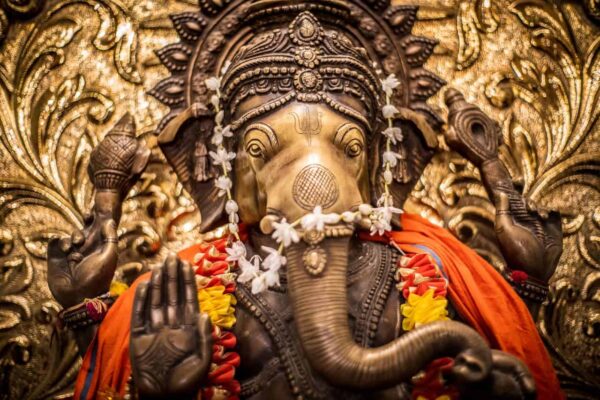
Zen Buddhism.

Discovering the Power of Mindfulness and Meditation through the Practices of Zen Buddhism.
Zen Buddhism is a school of Mahayana Buddhism that originated in China during the 6th century CE, before spreading to Japan and other parts of Asia. Zen emphasizes the importance of direct experience, meditation, and mindfulness as the primary means to attain spiritual awakening and enlightenment, known as satori. With its focus on simplicity, directness, and experiential wisdom, Zen offers a practical and accessible path to spiritual growth and self-discovery.
At the heart of Zen practice is zazen, a form of seated meditation that cultivates mindfulness, concentration, and deep self-awareness. Zazen is typically practiced in a quiet, serene environment, often accompanied by the gentle sound of a bell or the rhythmic breathing of fellow practitioners. The goal of zazen is not to achieve a specific state of mind or attain a particular insight but rather to be fully present in the here and now, observing one’s thoughts and sensations without judgment or attachment.
In addition to zazen, Zen Buddhism also employs a unique teaching method called koans, which are paradoxical questions or statements that challenge the rational mind and encourage intuitive understanding. Koans are often used as a tool for meditation, helping practitioners to break free from habitual thought patterns and experience a direct, non-conceptual understanding of reality.
Another key aspect of Zen practice is mindfulness in daily life. Zen emphasizes the importance of bringing one’s full attention and awareness to everyday activities, such as eating, walking, or even performing simple chores. By engaging in these tasks with mindfulness and intention, practitioners can cultivate a deeper connection with the present moment and experience the sacredness of ordinary life.
To incorporate the principles and practices of Zen Buddhism into your own spiritual journey, consider the following:
Practice zazen:
Set aside time each day for seated meditation, focusing on your breath and allowing thoughts and sensations to arise without judgment or attachment. You can find guided zazen meditation resources online or attend a local Zen center to learn from experienced practitioners.
Study koans:
Explore the world of Zen koans, pondering their meaning and using them as a tool for meditation and self-inquiry. You can find collections of koans in books or online, and some Zen centers offer koan study sessions with a teacher.
Cultivate mindfulness in daily life:
Practice bringing your full attention and awareness to everyday activities, such as eating, walking, or cleaning. By engaging in these tasks mindfully, you can deepen your connection with the present moment and uncover the sacredness in the ordinary.
Read Zen literature:
Dive into the writings of Zen masters, such as Dogen, Hakuin, and Shunryu Suzuki, to gain insights into the teachings and philosophy of Zen Buddhism.
Attend a Zen retreat or workshop:
Participate in a Zen retreat or workshop, where you can immerse yourself in the practice, learn from experienced teachers, and connect with fellow practitioners.
By embracing the teachings and practices of Zen Buddhism, you can discover the transformative power of mindfulness and meditation, cultivate a deeper connection with the present moment, and experience the profound wisdom of direct, experiential understanding. As you walk the sacred path of Zen, you will uncover the true nature of reality and the boundless potential for spiritual growth and self-discovery that lies within you.
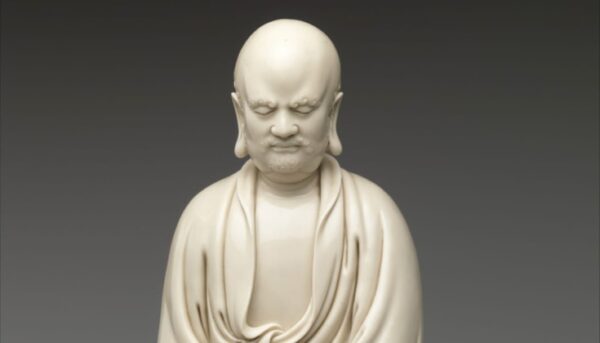
Kabbalah and Jewish Mysticism
Unraveling the Secrets of the Kabbalah and the Tree of Life in Jewish Mysticism.
Kabbalah is a form of Jewish mysticism that seeks to understand the nature of the divine, the universe, and the human soul. With roots dating back to the 12th century, Kabbalah has evolved over time, incorporating various mystical teachings, esoteric symbols, and meditative practices. Kabbalah offers a unique perspective on the sacred path, inviting seekers to explore the hidden dimensions of reality and unlock the spiritual potential within themselves.
One of the central concepts in Kabbalah is the Tree of Life, also known as the Etz Chaim. The Tree of Life is a symbolic representation of the ten divine emanations, or sefirot, through which the infinite light of the divine is channeled into the finite world. Each sefirah represents a specific aspect of the divine, such as wisdom, understanding, or beauty, and they are interconnected through a complex network of paths that correspond to the 22 letters of the Hebrew alphabet.
By studying and meditating on the Tree of Life, Kabbalists seek to understand the divine blueprint of creation and gain insight into the spiritual forces that shape their lives. The Tree of Life also serves as a roadmap for personal transformation, providing guidance on how to balance and harmonize the various aspects of one’s soul in order to achieve spiritual growth and fulfillment.
In addition to the Tree of Life, Kabbalah also emphasizes the importance of meditation, prayer, and other contemplative practices as tools for spiritual development. Kabbalists engage in a variety of meditative techniques, such as visualizing the divine names and letters of the Hebrew alphabet or contemplating the mystical meanings of sacred texts.
To incorporate the wisdom of Kabbalah and Jewish mysticism into your own spiritual journey, consider the following:
Study the Tree of Life:
Familiarize yourself with the ten sefirot and their associated qualities, as well as the paths that connect them. You can find resources on the Tree of Life in books, online, or through Kabbalah classes and workshops.
Meditate on the sefirot:
Practice meditating on the sefirot, visualizing their colors, shapes, and attributes, and reflecting on their significance in your own life.
Learn about the Hebrew alphabet:
Study the mystical meanings and associations of the Hebrew letters, which are believed to hold the keys to understanding the divine language of creation.
Read Kabbalistic texts:
Delve into the writings of Kabbalistic masters, such as the Zohar, the Sefer Yetzirah, and the works of Isaac Luria and Moses Cordovero, to gain a deeper understanding of Kabbalistic teachings and concepts.
Connect with a Kabbalah teacher or community:
Seek out a knowledgeable teacher or join a Kabbalah study group to learn from others and share your experiences on the sacred path.
By exploring the secrets of the Kabbalah and the Tree of Life, you can unlock the hidden dimensions of reality, gain a deeper understanding of the divine, and embark on a transformative journey of personal growth and spiritual awakening. The wisdom of Kabbalah and Jewish mysticism offers a rich and multifaceted path to spiritual enlightenment, providing a wealth of insights and practices to guide you on your sacred journey.

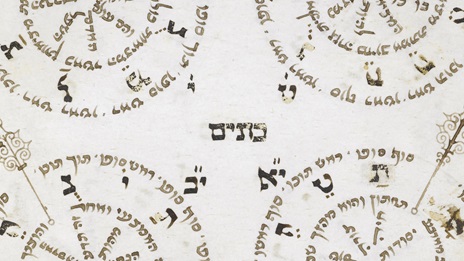
The Shamanic Path.

Journeying into the Spirit World and Embracing the Ancient Wisdom of Indigenous Cultures.
Shamanism is an ancient spiritual practice that has been at the core of many indigenous cultures worldwide for thousands of years. Shamanic traditions share a belief in the interconnectedness of all things and the existence of a spiritual realm inhabited by spirits, ancestors, and other non-physical beings. At the center of the shamanic path is the shaman, a skilled practitioner who serves as a bridge between the physical and spiritual worlds, providing healing, guidance, and wisdom for their community.
One of the key practices in shamanism is the shamanic journey, a form of guided meditation or altered state of consciousness that enables the shaman to enter the spirit world and communicate with spirit guides, animal totems, and other spiritual beings. During the shamanic journey, the shaman may receive insights, healing energy, or messages to bring back to the physical world, benefiting both themselves and their community.
Shamanic healing practices often involve the use of energy work, ritual, and the invocation of spiritual allies to address physical, emotional, and spiritual imbalances. These practices may include soul retrieval, where the shaman retrieves lost fragments of a person’s soul; power animal retrieval, where the shaman helps a person reconnect with their animal spirit guide; and extraction, where the shaman removes negative energies or entities from a person’s energetic field.
To incorporate the wisdom of the shamanic path into your own spiritual journey, consider the following:
Learn about shamanic traditions:
Study the rich history, beliefs, and practices of various indigenous cultures and their shamanic traditions. Books, documentaries, and online resources can provide valuable information on this ancient spiritual path.
Practice shamanic journeying:
Engage in shamanic journeying through guided meditations, drumming, or other methods that facilitate altered states of consciousness. You can find resources online, attend workshops, or work with a skilled shamanic practitioner to learn this powerful practice.
Connect with nature:
Spend time in nature, cultivating a deep sense of reverence and connection with the Earth and all living beings. This can help you develop a greater appreciation for the interconnectedness of all things and the importance of living in harmony with the natural world.
Embrace ritual and ceremony:
Incorporate ritual and ceremony into your spiritual practice, using elements such as sacred space, intention-setting, and offerings to honor and connect with the spirit world.
Work with a shamanic practitioner or teacher:
Seek out the guidance of an experienced shamanic practitioner or teacher to learn more about the shamanic path, receive healing, or participate in ceremonies and workshops.
By exploring the ancient wisdom and spiritual practices of indigenous cultures, you can tap into the transformative power of the shamanic path and discover new ways of connecting with the spirit world, healing, and personal growth. As you journey deeper into the realm of shamanism, you’ll forge a sacred bond with the Earth and its spiritual inhabitants, opening the door to a profound understanding of the mysteries of existence and the boundless potential of the human spirit.

Sufism and the Path of Love.
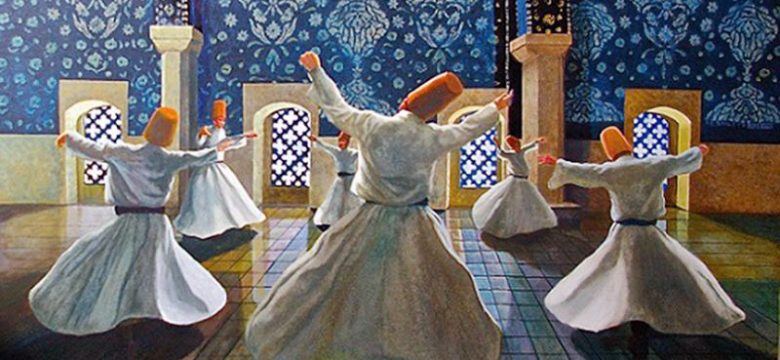
Delving into the Mystical Teachings of Sufism and Experiencing the Divine through Love and Devotion.
Sufism, also known as Islamic mysticism, is a spiritual tradition that emphasizes the importance of love, devotion, and the direct experience of the divine. Sufis seek to cultivate a deep, personal relationship with God, transcending the boundaries of conventional religious practice and embracing a path of spiritual transformation guided by the heart.
At the core of Sufism is the concept of tawhid, or the unity of all existence, which teaches that everything in the universe is interconnected and ultimately one with God. Sufis believe that by recognizing and embracing this divine unity, they can attain a state of spiritual awakening and enlightenment known as fana, or annihilation in God.
One of the most distinctive aspects of Sufism is its emphasis on love and devotion as the primary means of connecting with the divine. Sufis engage in various practices designed to awaken the heart and cultivate a deep, abiding love for God, such as dhikr (remembrance of God through repetition of divine names), prayer, meditation, and the recitation of sacred poetry.
Sufism also has a rich tradition of spiritual mentorship and discipleship, with seekers often joining a tariqa (Sufi order) and forming close relationships with a spiritual guide, or murshid, who provides guidance, support, and instruction on the mystical path.
To incorporate the teachings and practices of Sufism into your own spiritual journey, consider the following:
Study the works of Sufi poets and mystics:
Delve into the writings of renowned Sufi poets and mystics, such as Rumi, Hafez, and Ibn Arabi, to gain a deeper understanding of the themes and concepts central to Sufism.
Practice dhikr:
Engage in the practice of dhikr, or the remembrance of God, by repeating divine names or phrases in meditation or throughout your day. This can help you cultivate a constant awareness of the divine presence and deepen your connection with God.
Explore Sufi music and dance:
Listen to traditional Sufi music, such as qawwali or sama, and consider participating in Sufi dance or whirling, a form of moving meditation practiced by the Mevlevi Order, also known as the Whirling Dervishes.
Connect with a Sufi community or teacher:
Seek out a local Sufi community, tariqa, or teacher who can provide guidance, support, and instruction on the Sufi path.
Cultivate love and devotion in your daily life: Strive to infuse your thoughts, words, and actions with love and devotion, focusing on the divine presence within yourself and others, and seeking to embody the qualities of compassion, mercy, and kindness.
By embracing the mystical teachings of Sufism and the path of love, you can experience a profound connection with the divine and embark on a transformative journey of spiritual awakening and self-discovery. The wisdom of Sufism offers a unique and powerful perspective on the sacred path, inviting seekers to transcend the limitations of conventional religion and explore the boundless depths of divine love and unity.

Exploring the Teachings of the Tao.
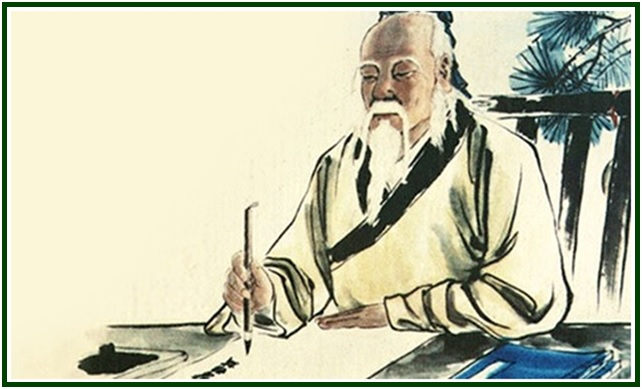
Delving into the Wisdom of Taoism and the Art of Living in Harmony with the Tao.
Taoism is an ancient Chinese philosophical and spiritual tradition that emphasizes living in harmony with the Tao, or the natural flow of the universe. With roots dating back over 2,500 years, Taoism offers a wealth of insights and practices designed to help individuals cultivate balance, inner peace, and a deep connection with the natural world.
At the heart of Taoism is the concept of the Tao, which can be understood as the underlying principle or essence of the universe. The Tao is often described as a mysterious, ineffable force that cannot be fully grasped or defined, yet it permeates all aspects of existence and guides the natural unfolding of life. By attuning themselves to the Tao and aligning their actions with its natural rhythms, Taoists seek to achieve a state of harmony and effortless ease known as wu wei.
Taoist teachings emphasize the importance of simplicity, humility, and contentment as key virtues on the spiritual path. Taoists also believe in the interconnectedness of all things and the need for balance between the complementary forces of yin and yang, which represent aspects such as receptivity and activity, darkness and light, or femininity and masculinity.
To incorporate the wisdom of Taoism into your own spiritual journey, consider the following:
Study the Tao Te Ching:
Dive into the teachings of the Tao Te Ching, a foundational Taoist text attributed to the sage Laozi, which offers poetic and profound insights into the nature of the Tao and the art of living in harmony with its flow.
Explore other Taoist texts:
Delve into additional Taoist texts, such as the Zhuangzi, the Liezi, and the I Ching, to deepen your understanding of Taoist philosophy and practice.
Practice meditation and mindfulness:
Engage in Taoist meditation practices, such as zuowang (sitting and forgetting) or qigong (energy cultivation), which can help you cultivate inner stillness, balance, and awareness of the present moment.
Cultivate simplicity and contentment:
Embrace a lifestyle that values simplicity, humility, and contentment, focusing on the essential aspects of life and letting go of unnecessary desires and attachments.
Connect with nature: Spend time in nature, observing and appreciating the natural rhythms and patterns of the world around you, and seek to align your own actions and lifestyle with these natural flows.
Learn from a Taoist teacher or community:
Seek out a knowledgeable Taoist teacher or join a Taoist community to learn from others and share your experiences on the sacred path.
By exploring the teachings and practices of Taoism, you can discover the transformative power of living in harmony with the Tao and experience the profound wisdom of this ancient spiritual tradition. As you walk the sacred path of Taoism, you’ll develop a deeper connection with the natural world, cultivate inner peace and balance, and learn to embrace the beauty and mystery of life’s ever-changing flow.
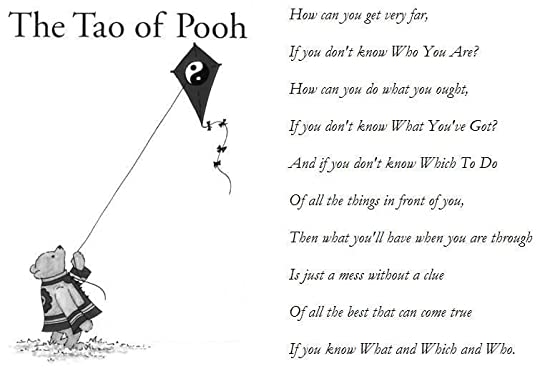
The Path of Bhakti Yoga.
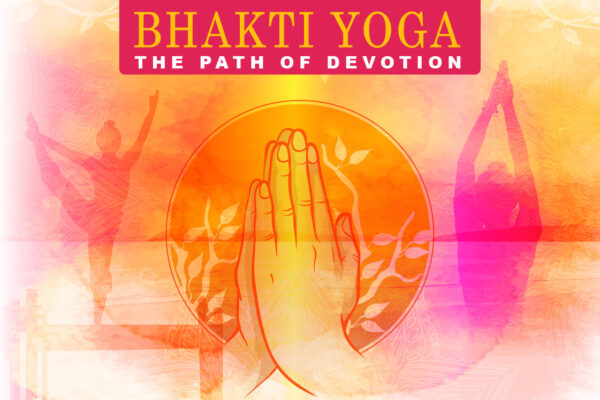
Cultivating Devotion and Union with the Divine through Love, Chanting, and Sacred Rituals.
Bhakti Yoga is a branch of Hindu spirituality that focuses on cultivating love and devotion for the divine as the primary means of achieving spiritual growth and self-realization. With roots dating back thousands of years, Bhakti Yoga offers a heart-centered approach to spirituality, inviting seekers to develop a deep, personal relationship with the divine and surrender to the transformative power of love.
At the core of Bhakti Yoga is the practice of devotion, which can take many forms, such as singing, chanting, dancing, meditation, and prayer. Bhakti Yogis often engage in the practice of kirtan, a call-and-response chanting of sacred mantras or the names of deities, as a means of invoking the divine presence and expressing their love and devotion.
Bhakti Yoga also places great importance on the role of sacred rituals, or puja, which are performed to honor and connect with the divine. These rituals may involve offering flowers, incense, food, or other symbolic items to a deity, as well as reciting prayers and mantras to invoke the deity’s blessings and protection.
To incorporate the teachings and practices of Bhakti Yoga into your own spiritual journey, consider the following:
Study Bhakti Yoga texts:
Dive into the teachings of foundational Bhakti Yoga texts, such as the Bhagavad Gita, the Ramayana, and the works of saints like Mirabai and Chaitanya Mahaprabhu, to gain a deeper understanding of the principles and practices of this devotional path.
Practice kirtan and chanting:
Participate in kirtan, or group chanting sessions, to experience the joy and transformative power of devotional singing. You can also practice chanting mantras or the names of deities on your own as a form of meditation and devotion.
Engage in prayer and meditation:
Develop a daily practice of prayer and meditation, focusing on cultivating a deep, personal connection with the divine and expressing your love and devotion.
Perform sacred rituals:
Incorporate sacred rituals, or puja, into your spiritual practice, honoring the divine through offerings, prayers, and symbolic gestures.
Cultivate an attitude of devotion in daily life:
Strive to infuse your thoughts, words, and actions with love and devotion, focusing on the divine presence within yourself and others, and seeking to embody the qualities of compassion, humility, and selflessness.
Connect with a Bhakti Yoga community or teacher:
Seek out a Bhakti Yoga community, teacher, or guru who can provide guidance, support, and instruction on the devotional path.
By embracing the path of Bhakti Yoga, you can experience the transformative power of love and devotion and cultivate a deep, personal relationship with the divine. The teachings and practices of Bhakti Yoga offer a unique and powerful perspective on the sacred path, inviting seekers to surrender to the mysteries of the divine and open their hearts to the boundless possibilities of spiritual growth and self-realization.

the sacred path of spiritual growth is as diverse and multifaceted as the human spirit itself. As we explore the ancient wisdom and spiritual practices from around the world, we are reminded that the quest for self-discovery, connection, and enlightenment transcends cultural and geographical boundaries. Each of these spiritual traditions offers unique insights and perspectives on the nature of existence, providing valuable tools and practices that can enrich our lives and deepen our understanding of the world around us.
As we embark on our spiritual journey, it’s important to remember that there is no one-size-fits-all approach to spirituality. Instead, we should honor our individuality and unique spiritual inclinations, seeking out the paths and practices that resonate most deeply with our own hearts and souls. By embracing the wisdom of these diverse traditions and incorporating their teachings into our own spiritual practices, we can cultivate a rich, holistic understanding of the sacred path and open ourselves to the transformative power of spiritual growth.
Ultimately, the spiritual journey is one of unity, reminding us that beneath the surface of our seemingly separate experiences lies a profound interconnectedness that binds us all. As we delve into the ancient wisdom of these spiritual paths, we are invited to transcend the limitations of our own perspectives and recognize the divine spark within ourselves and others. May the exploration of these sacred traditions inspire you to continue your own spiritual journey, deepening your connection to the divine and awakening to the boundless potential of the human spirit.



